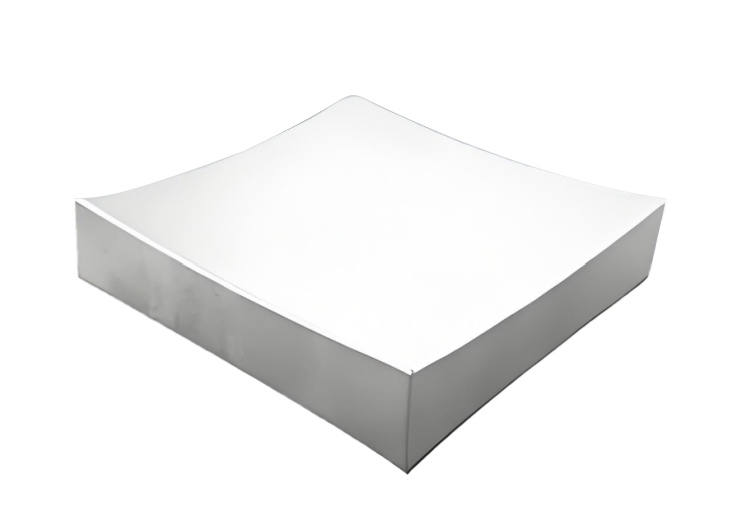The types of optical mirrors mainly include the following:
Flat Mirrors: These have flat surfaces that can precisely reflect light. They are primarily used in scientific research, optical experiments, and spectroscopy to guide or change the direction of light. They are also widely used in devices like telescopes and microscopes to reflect and direct light, as well as in industrial applications such as laser cutting and laser printers. The high precision and flatness of plane mirrors make them essential components in many optical systems, ensuring the accuracy and stability of the light path.
Spherical Mirrors: These have spherical surfaces and are divided into convex and concave mirrors. Convex mirrors cause parallel light rays to diverge, while concave mirrors converge parallel light rays to a point. They are widely used in imaging systems, laser systems, and optical imaging. Convex mirrors are commonly used in wide-angle imaging and security monitoring, while concave mirrors play a crucial role in astronomical telescopes, laser focusing, and optical instruments.
Aspherical Mirrors: These mirrors have surfaces that are neither flat nor spherical, such as parabolic, hyperbolic, and ellipsoidal mirrors. They offer unique advantages in specific applications, such as focusing parallel beams and collimating point sources, and are often used in high-precision imaging and laser systems. Aspherical mirrors can effectively reduce aberrations and improve image quality, making them widely used in high-end optical instruments and advanced laser systems.
These mirrors have surfaces that are neither flat nor spherical, such as parabolic, hyperbolic, and ellipsoidal mirrors. They offer unique advantages in specific applications, such as focusing parallel beams and collimating point sources, and are often used in high-precision imaging and laser systems. Aspherical mirrors can effectively reduce aberrations and improve image quality, making them widely used in high-end optical instruments and advanced laser systems.
Right-Angle Prism Mirrors: These typically have anti-reflective coatings on the right-angle sides and reflective coatings on the hypotenuse. Due to their larger contact area and typical angles, right-angle prisms are easier to install and offer better stability and strength against mechanical stress, making them suitable for various devices and instruments. Right-angle prism mirrors are important in folding optical paths and beam steering, commonly used in lasers, optical measurement devices, and imaging systems.
Off Axis Parabolic Mirror:  These mirrors are segments of a parent parabolic surface used to focus parallel beams or collimate point sources. Their off-axis design can reduce spherical and chromatic aberrations, making them suitable for femtosecond pulse lasers. Off-axis parabolic mirrors are crucial in high-precision laser processing, astronomical observation, and scientific research, providing high-quality beam focusing and collimation.
These mirrors are segments of a parent parabolic surface used to focus parallel beams or collimate point sources. Their off-axis design can reduce spherical and chromatic aberrations, making them suitable for femtosecond pulse lasers. Off-axis parabolic mirrors are crucial in high-precision laser processing, astronomical observation, and scientific research, providing high-quality beam focusing and collimation.
Hollow Roof Prism Mirrors: Composed of two right-angle prisms and a rectangular substrate, these mirrors offer extremely high surface flatness and excellent optical performance, suitable for high-precision optical systems. Hollow roof prism mirrors have unique advantages in beam splitting, combining, and path control, widely used in interferometers, spectrometers, and complex optical systems.
Metal-Coated Mirrors: These mirrors have a metal coating, such as aluminum, silver, or gold, on the substrate. They are suitable for broadband reflection and are commonly used in scientific research and industrial applications. Metal-coated mirrors have high reflectivity and a broad spectral response, making them ideal for laser systems, optical experiments, and industrial inspection equipment.
Dielectric-Coated Mirrors: These mirrors have multiple layers of dielectric coatings on the substrate to reflect specific wavelengths of light. They are suitable for precision optical systems, such as interferometers and spectrometers. Dielectric-coated mirrors offer high reflectivity and low absorption characteristics, providing excellent reflection performance within specific wavelength ranges, widely used in high-precision optical measurement and analysis equipment.
Bena Optics provides a diverse selection of optical mirrors as one of the leading optical mirrors manufacturers, spanning the ultraviolet (UV), visible, and infrared (IR) spectral bands. Our mirrors feature various coatings, including metal and dielectric layers, and are crafted from a range of materials such as optical glass, fused silica, infrared crystals, and metals.